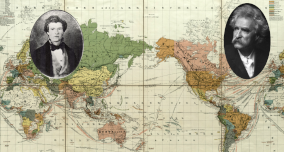The historic occupants of what is now the town of Tuxedo were the Lenni-Lenape, a branch of the large Algonquian language family of Native Americans, whose different branches lived along the East Coast from Canada through the Upper South. The Lenape named the largest lake in the area Tucseto, meaning either "place of the bear" or "clear flowing water."[citation needed] European-American colonists later adopted that name for the town they developed.
Some Lenape stayed in villages in the Ramapo Mountains, having migrated west from Connecticut. They gradually intermarried with other ethnic groups in what was long a relatively remote frontier. They maintained a culture and community of their own in this area on both sides of the later border with New Jersey. The Ramapough Mountain Indians have been recognized by New Jersey as a Native American tribe.
From Dorothy Quick:
Tuxedo Park! That exclusive colony in the Ramapo Hills where a goodly part of New York's four hundred tucked themselves away. To have a house there in those days was to bear the stamp of social success. The Park was the retreat of aristocracy. Here, surrounded by walls through which lodge gates were the only means of entrance, they were firmly entrenched. No one could pass the gates unless they were either a resident or visiting someone who was, in which case they had to be vouched for by the person they were going to see.
